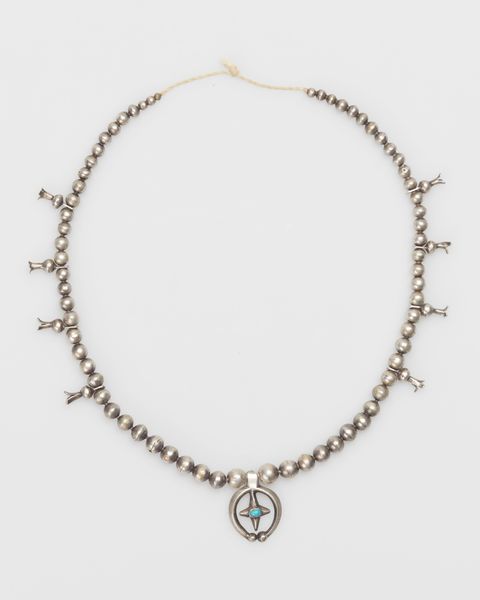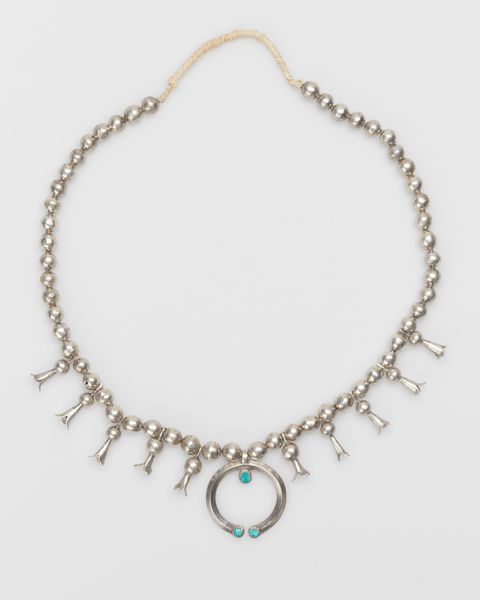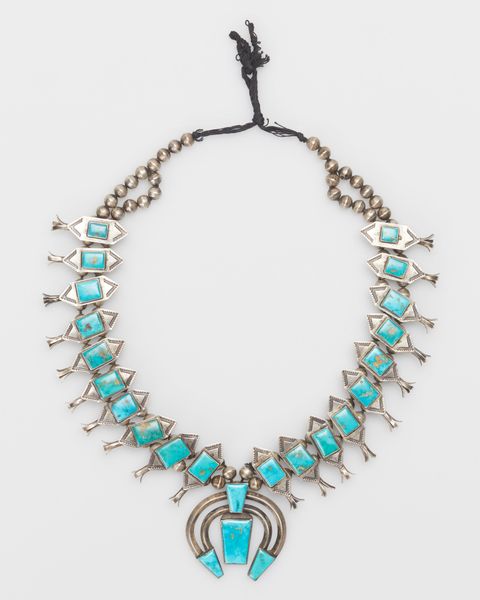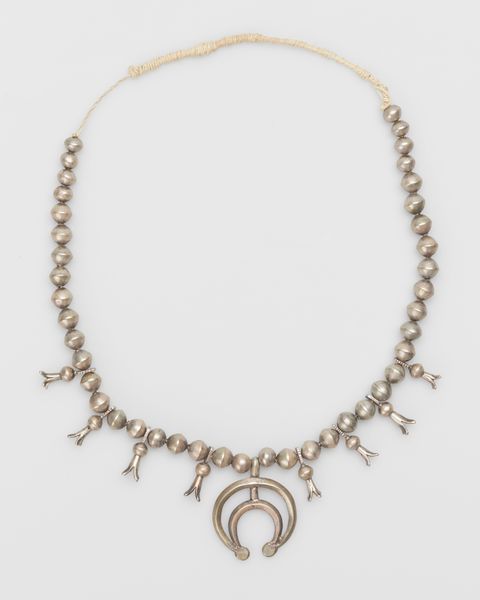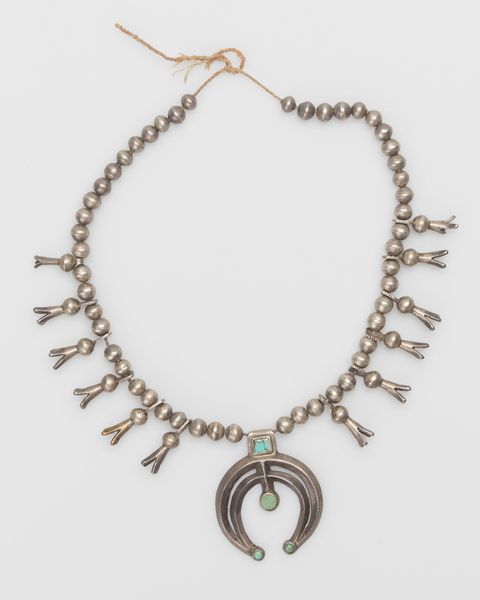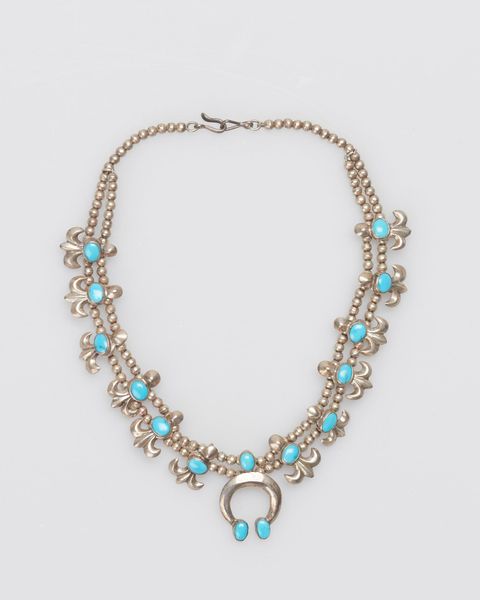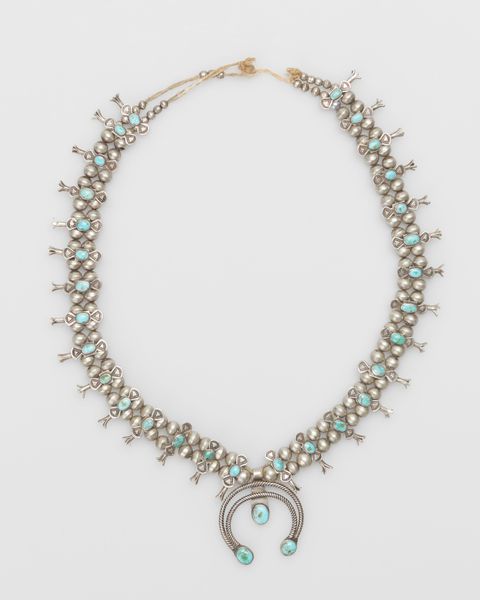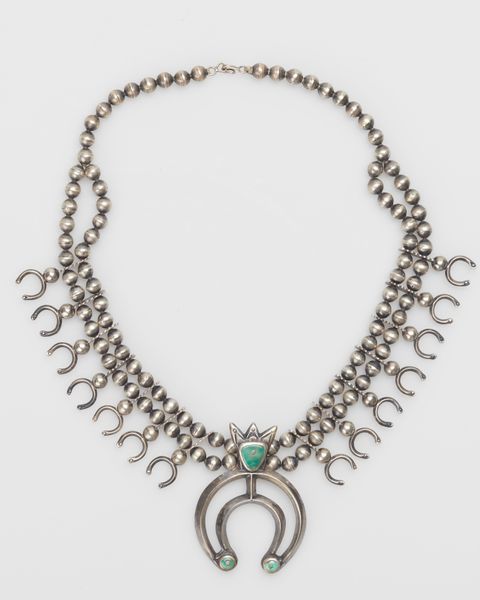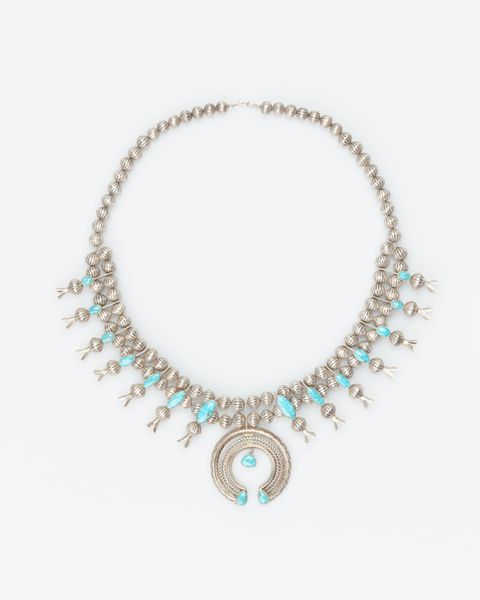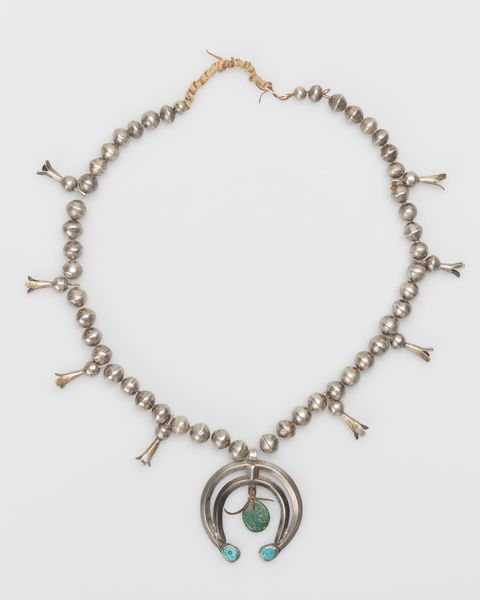
silver, metal
#
silver
#
metal
#
indigenous-americas
Copyright: Public Domain
Curator: The piece before us is a silver necklace, estimated to have been crafted around 1930 by an artist of the Navajo, or Diné, people. You can currently find it at the Minneapolis Institute of Art. Editor: Immediately, I’m struck by the contrast of textures: the smooth, uniform silver beads against the intricate pendant, particularly the turquoise inlay. There is something quietly ceremonial about it. Curator: That observation isn’t too far off, actually. The "naja," the crescent-shaped pendant, appears quite frequently in Navajo and other Southwestern jewelry, originally serving as a protective amulet. Editor: The naja as protection…interesting. How did this symbol evolve to be so prominent within Navajo art? Is it native to their belief system? Curator: It’s actually believed the naja made its way into Navajo artistry via contact with Spanish colonizers, who themselves had Moorish influences. The crescent shape can be traced back even further to ancient Roman and Middle Eastern origins. Editor: So its adoption signifies not just spiritual protection but a whole story of cultural exchange and adaptation! The addition of turquoise—did that also carry significance? Curator: Absolutely. Turquoise holds immense cultural and spiritual importance, often associated with protection, good fortune, and connection to the earth and sky. Notice how the blue of the stones punctuates the muted silver—it acts as visual focal points but also deeper spiritual accents. Editor: I find it fascinating how this piece, seemingly simple, contains layers of history: from its transcontinental symbol to the skill of the silversmith, reflecting larger socio-political dynamics of the American Southwest during that period. Curator: Indeed. It becomes a wearable embodiment of resilience and cultural synthesis, and even an understated comment on artistic agency amid cultural change. Editor: The necklace leaves me considering the silent dialogues between cultures expressed through art and adornment, and how ancient symbols evolve, continuing their narrative through time and across societies.
Comments
No comments
Be the first to comment and join the conversation on the ultimate creative platform.


